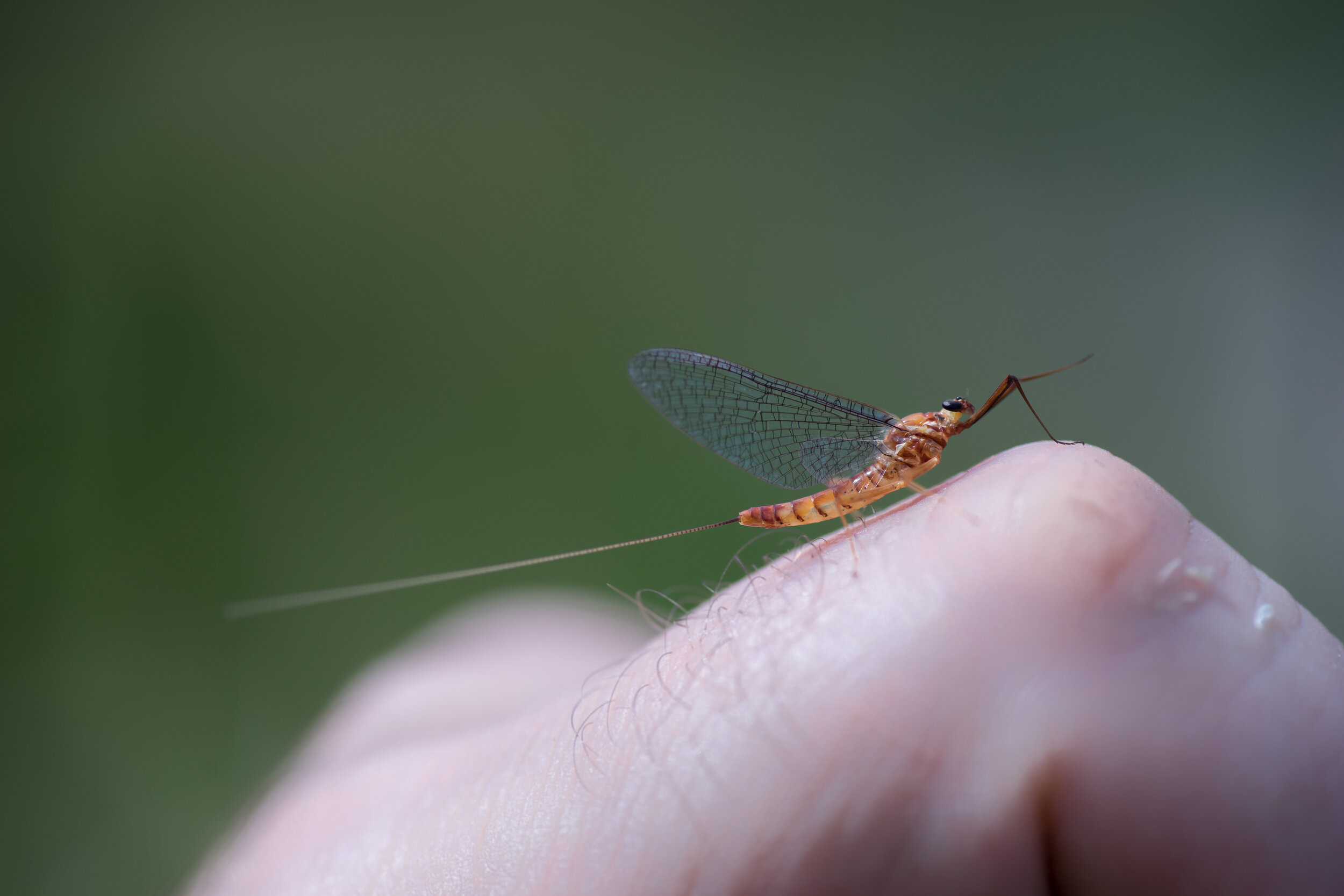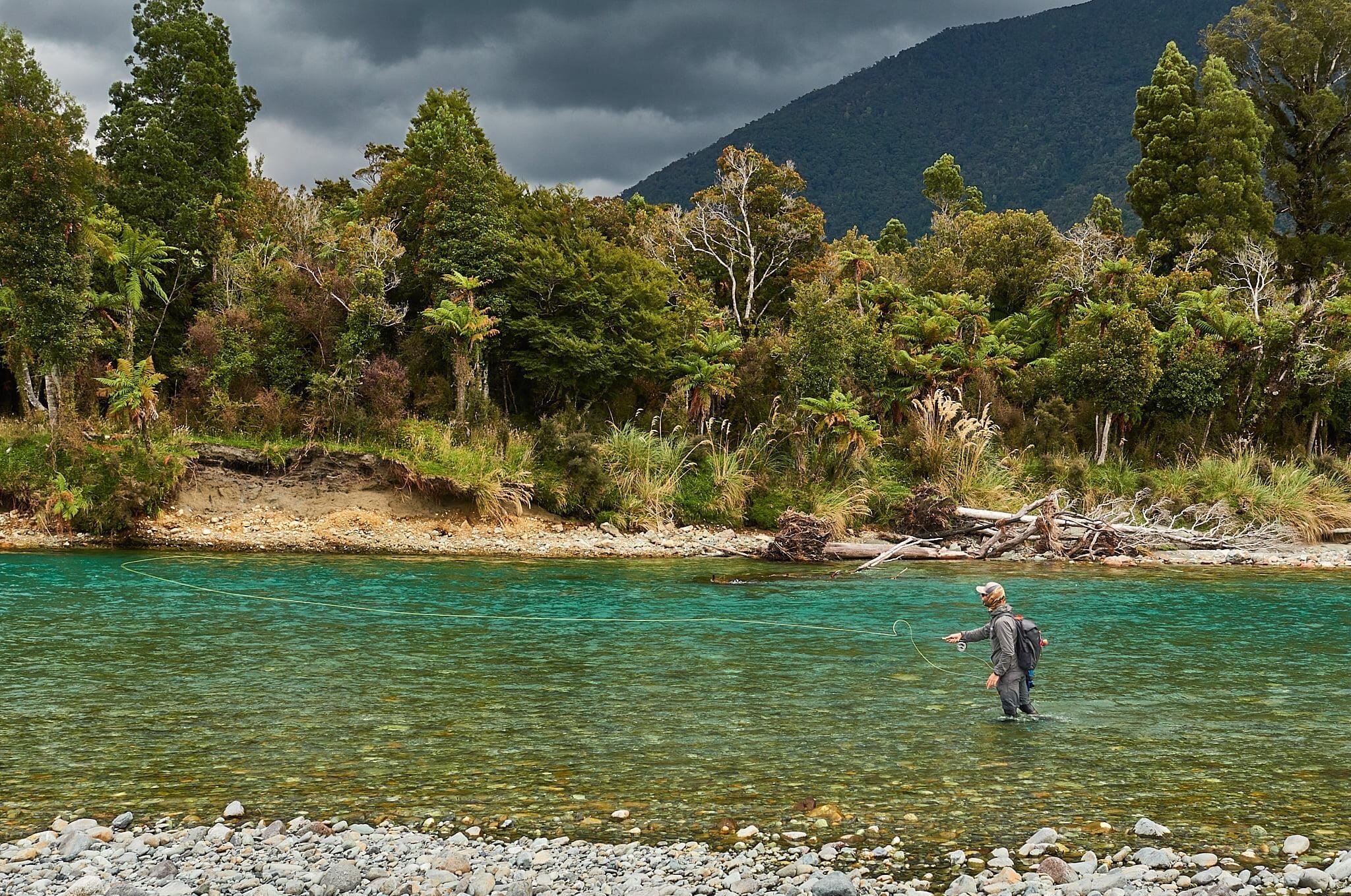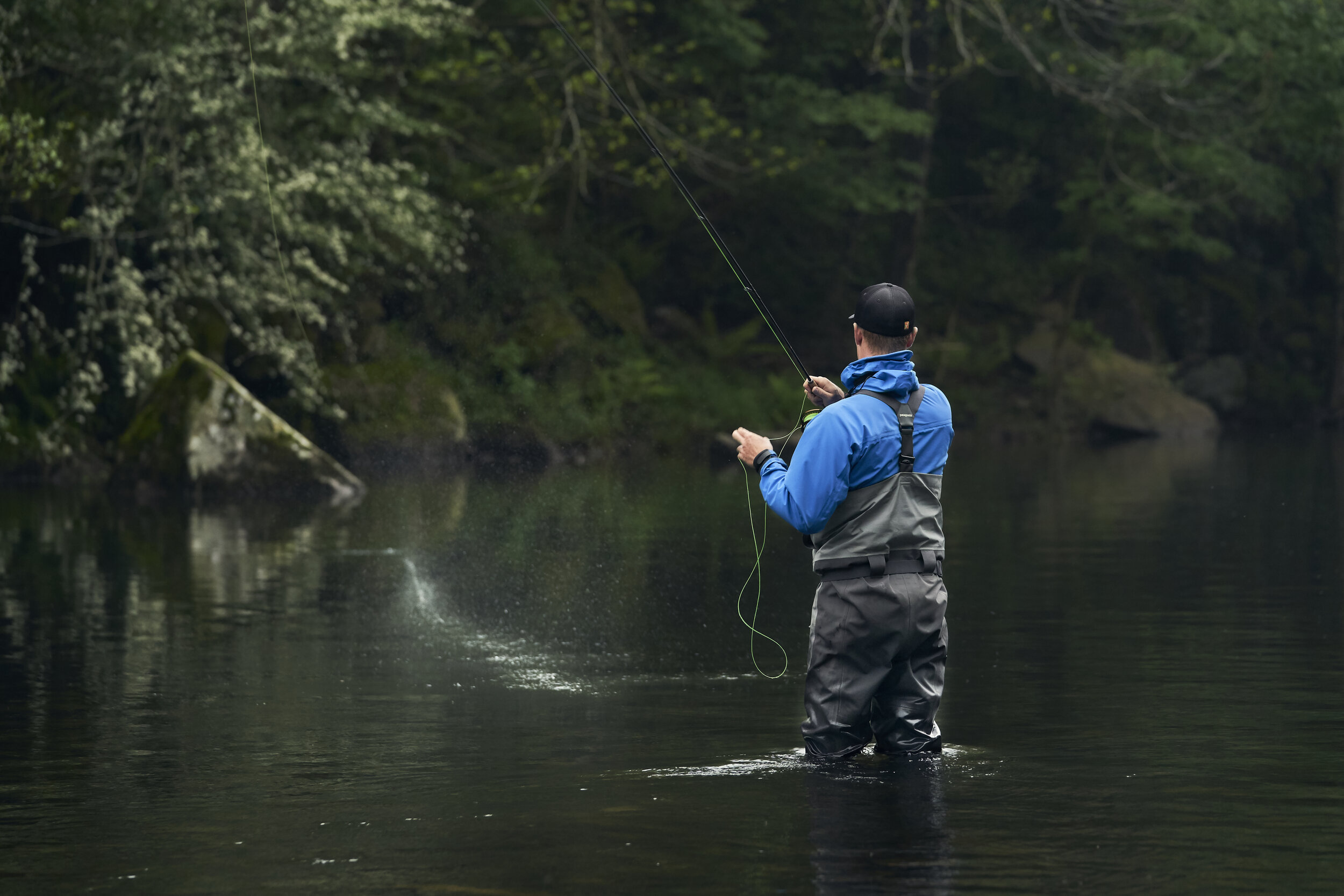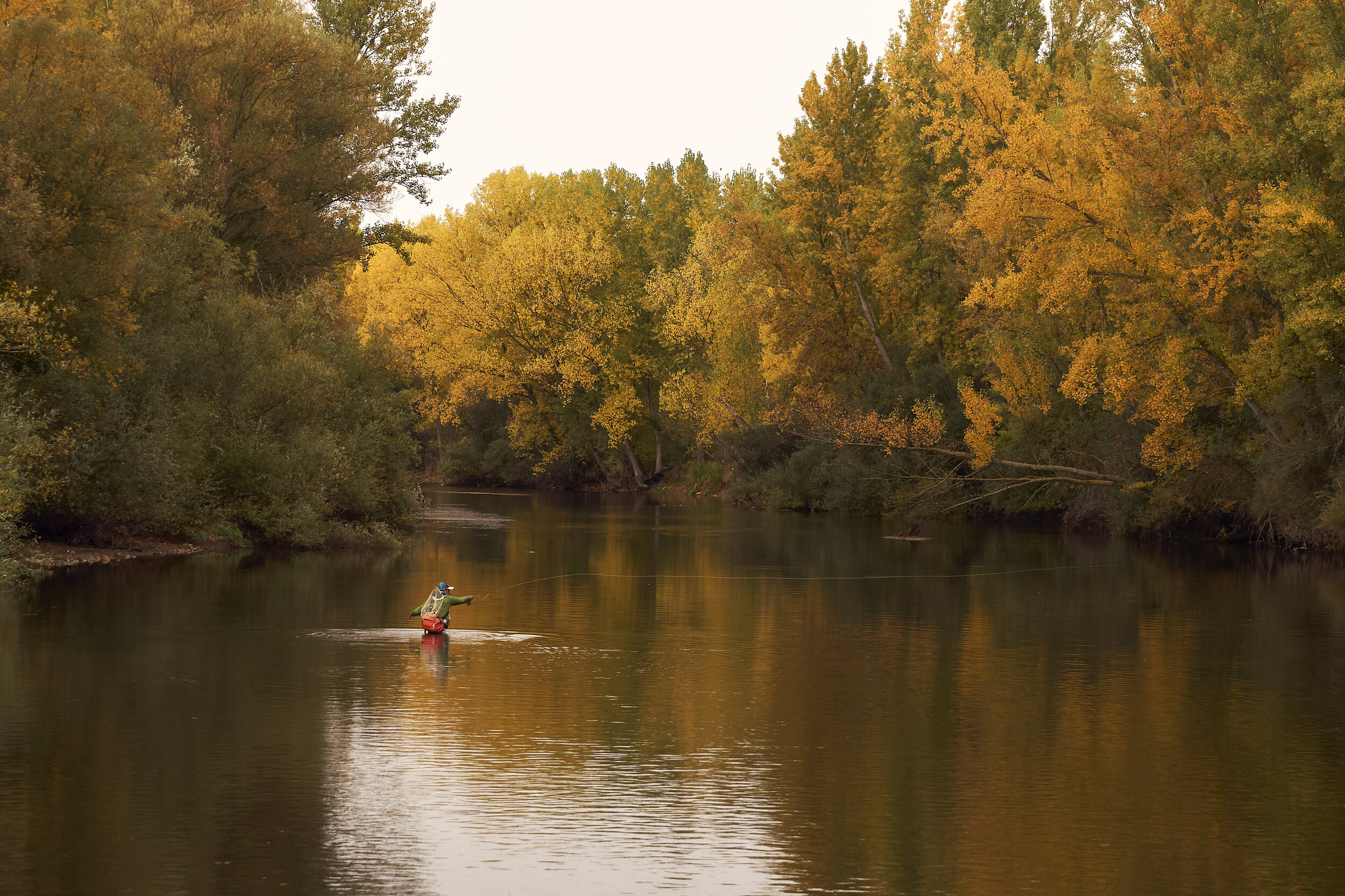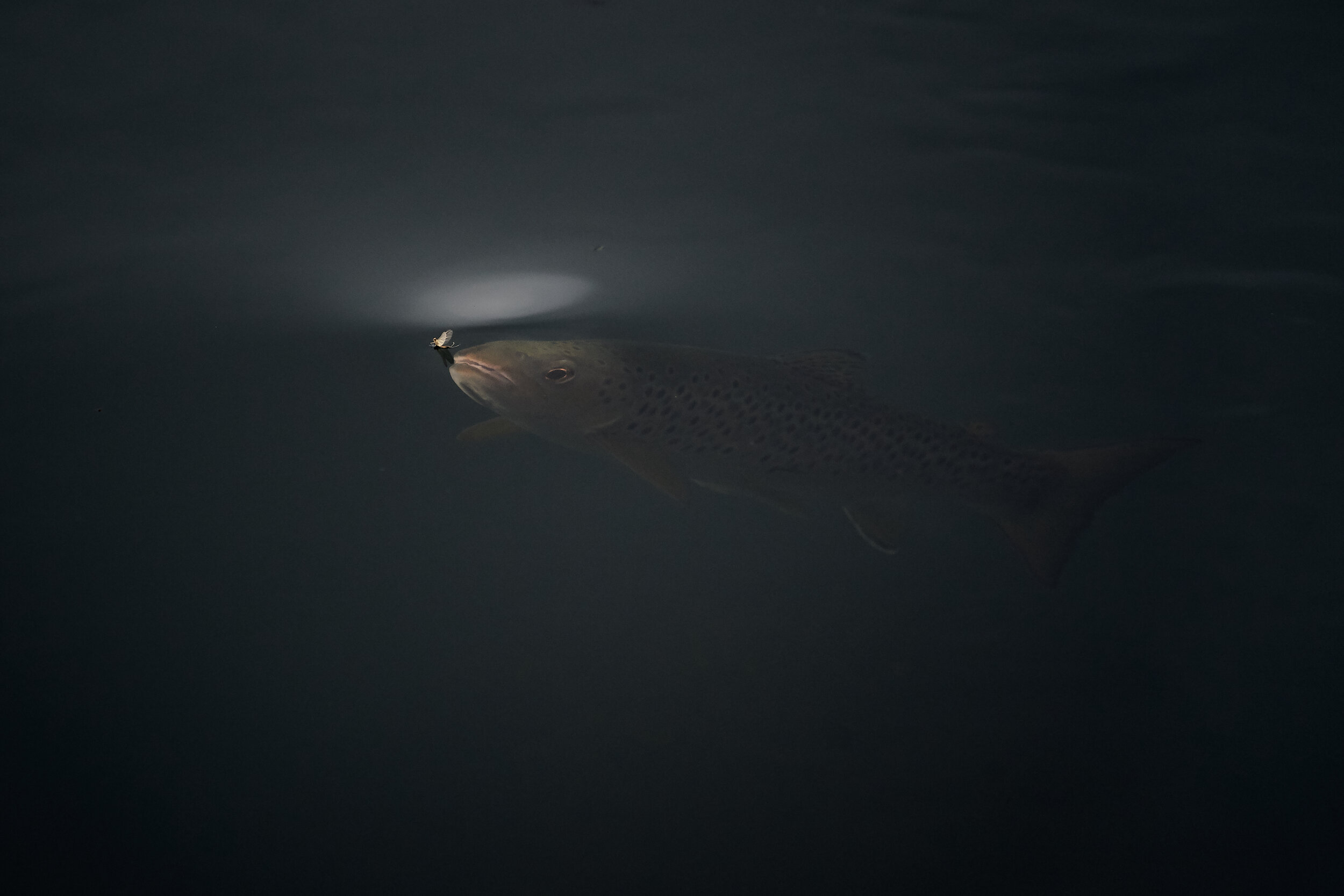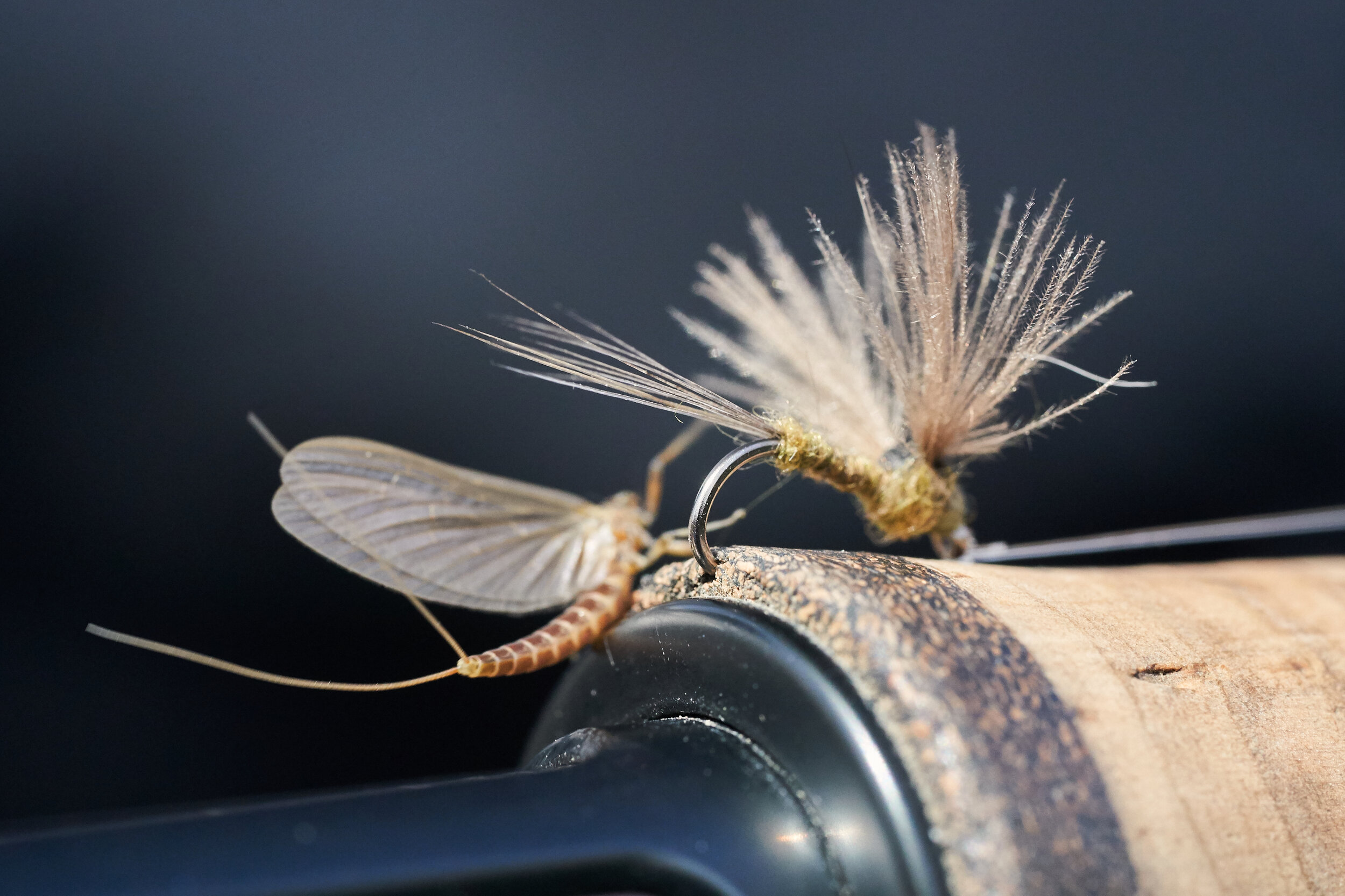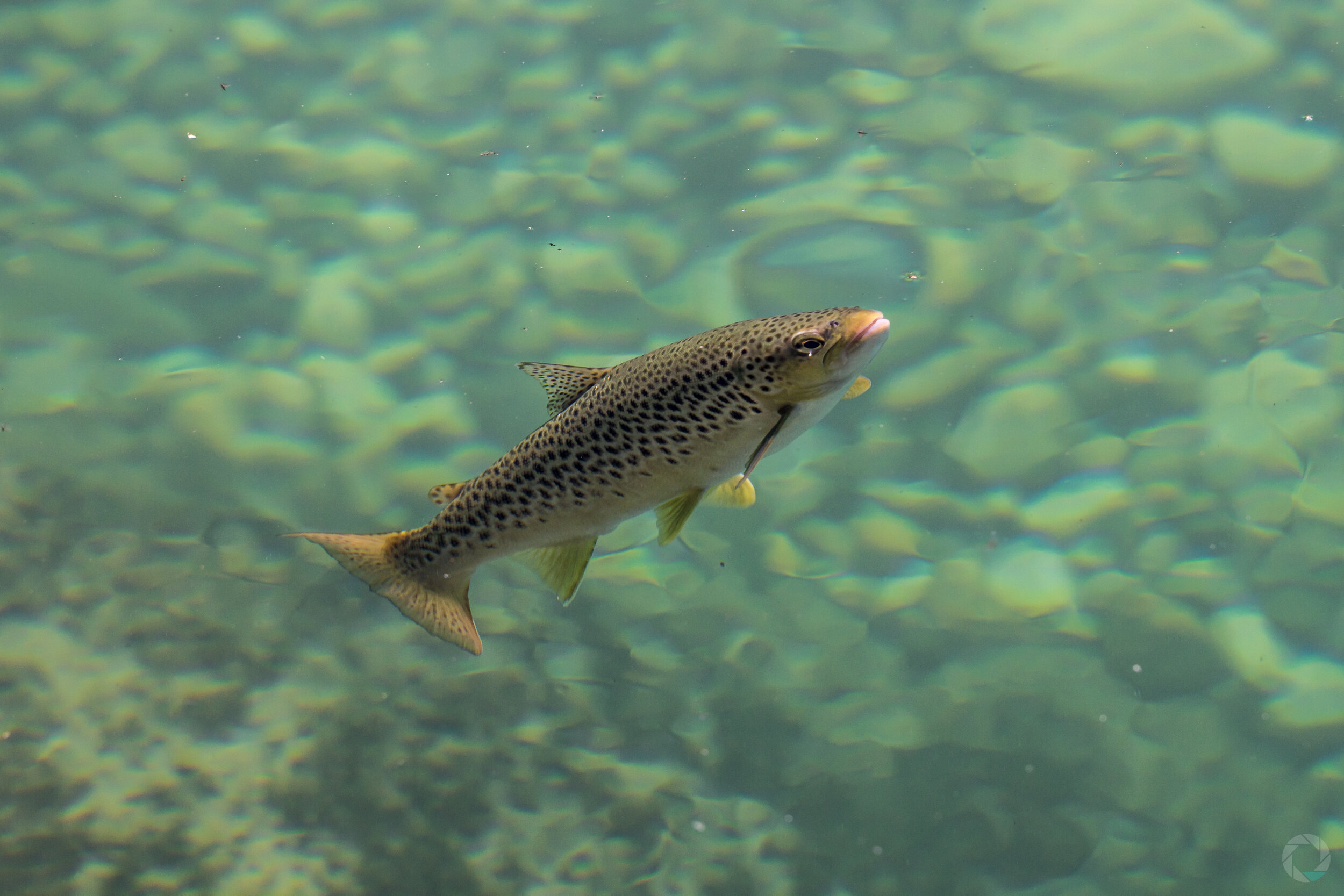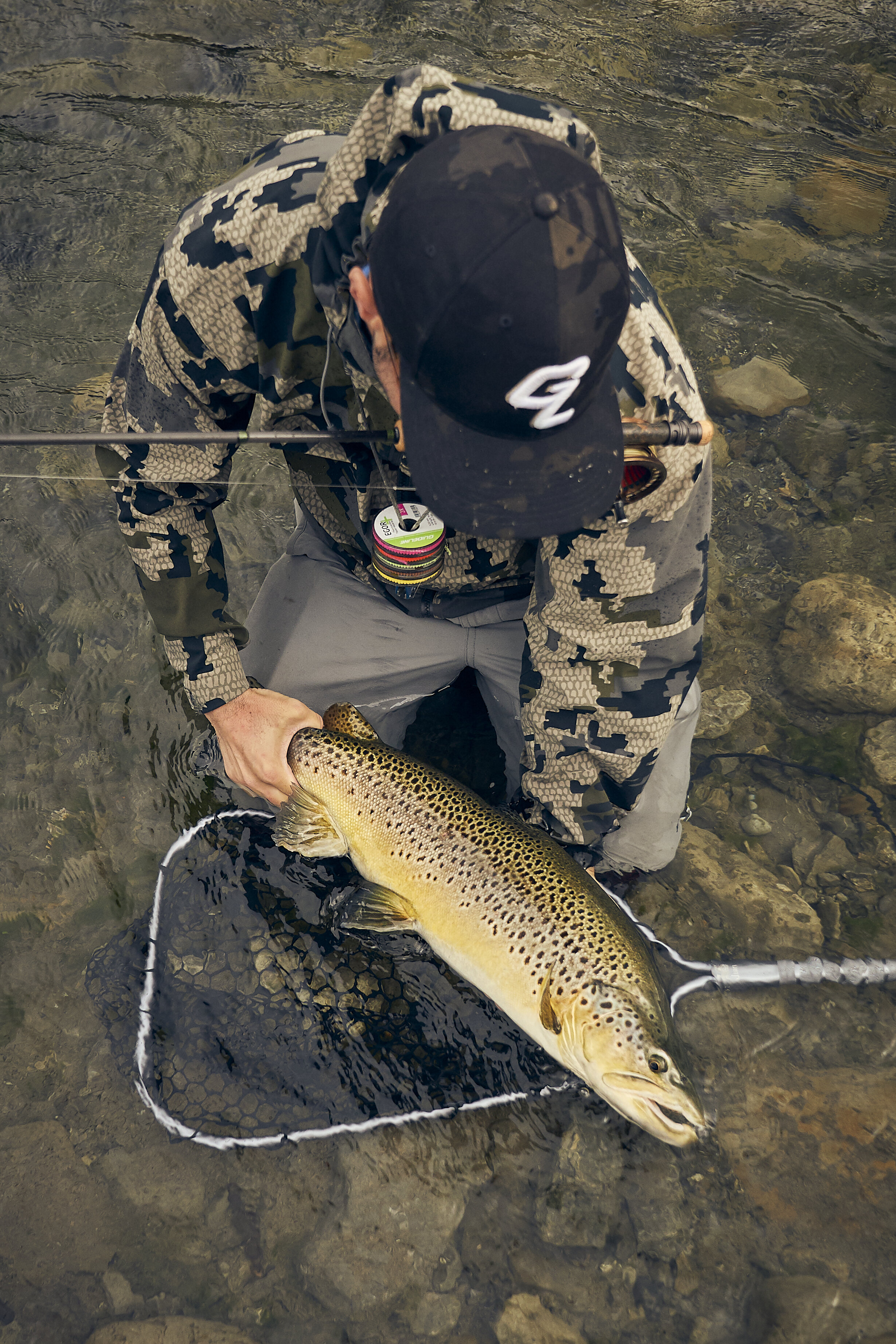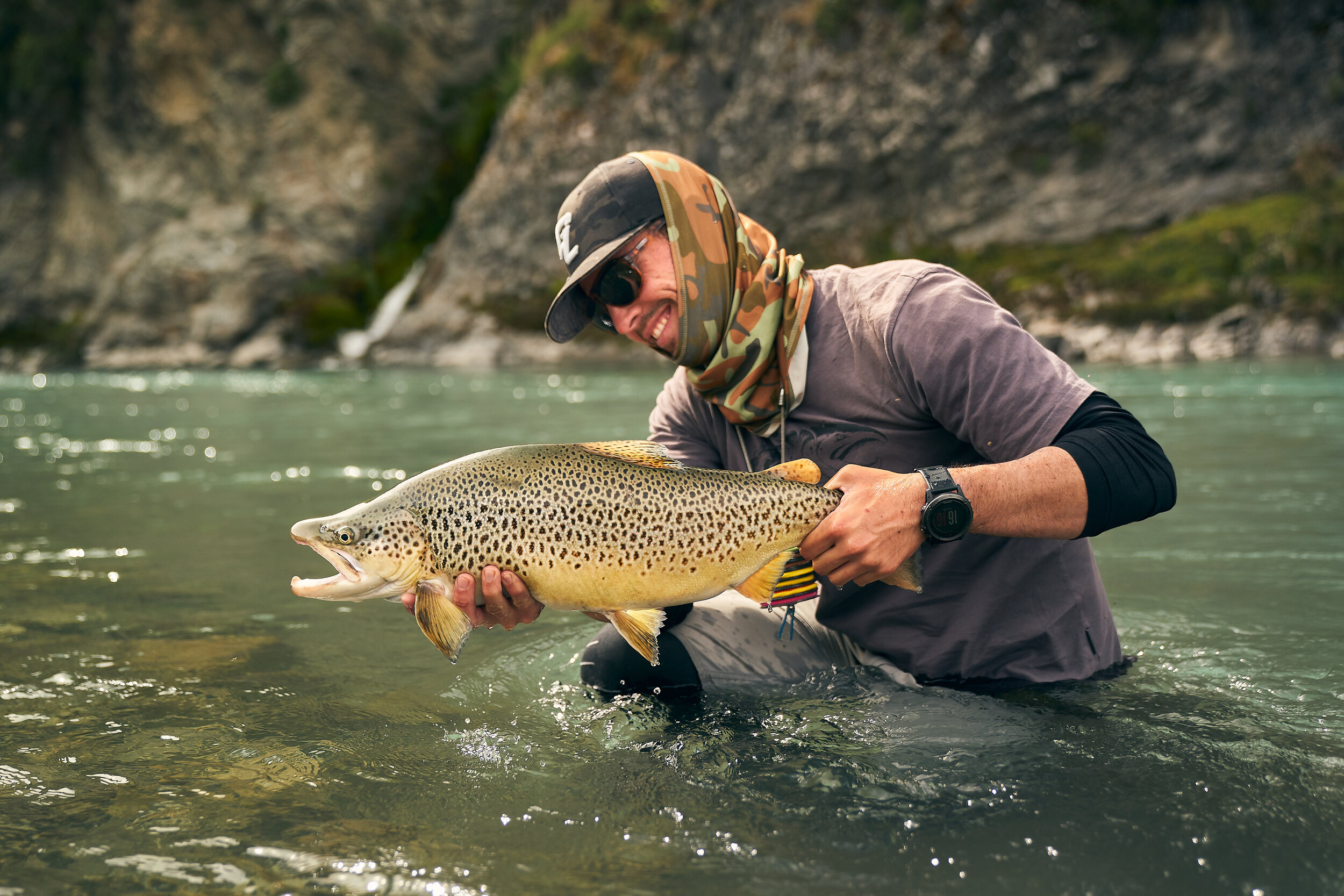
Alvaro G Santillan
First of all, I would like to introduce myself briefly, because I think that my personal approach and my evolution as a fly fisherman will be something to have in mind to understand my answers and considerations to each question.
I am mainly a sight fishing angler, a trout hunter. Since I started to fish in Spain 26 years ago, that has been my obsession. I am not interested in how many, I am interested in how and targeting the fish that I desire. You know, the big, old, odd trout that is hidden in every pool. That has been my goal and my motivation.
So lots of observation, hours and hours spent by the river and not so many cast, but I have to make that each one counts.
Photos by Alvaro G Santillian Aitor Coterón
1 Choice of equipment Rods, reels, fly lines, fly floatants, clothes, glasses and other useful items.
It is the first point, but maybe it is the less important in my opinion. All these things could be bought by money, skills and knowledge aren’t.
Of course, I choose my tackle depending on where I am fishing and my personal fishing approach, which could not be the same as yours, but I will try to explain why I choose my gear, because in my opinion that is the key question.
- I usually dry fly fish with a Guideline NT8 9´ #4, or in case I am targeting bigger fish or I had to deal with strong wind, a 9´#5. This rods is fast and accurate during casting and super smooth during the fight, protecting the tippet and absorbing all the vibrations that could un hooked the fish. It is something that years ago was difficult to get. The ones that were fast and powerful, were super stiff. Great rods for fly casting, bad rods for fishing, but now my fly caster and my fly fisher sides can be satisfied at the same time.
- Lines: I tend to choose lines with a head between 8 to 10 meters, with a not so long front taper. I use leaders between 18 to 27´, so you need some power to control them and that is easier when you have some mass in the tip of your line. I choose this length of head because I think that the shorter cast is the best cast and honestly, I don’t find many situations where I have to use a longer head. Lets think about it: with a 10 meter head, plus a 6 meter leader, plus a couple of meters of over hand line, plus 3 meters of line, you would be casting somewhere close to 20meters… and you are not shooting. As I said, I don’t find many situations where I have to cast a fish over 20 meters, so if I had a 15 meter head, well, maybe better a DT if I am not going to shoot never. My two favorites: Guideline Fario Elite as overall fly line and Guideline PowerPresentation for fishing in short distances or for facing strong winds.
- Fly floatants: I fly that you can not see it is a fly that is not fishing. So use flies that you see and keep them dry. Use the vibration of a rubber and a paper handkerchief for dry it when it is wet or after landing a fish. Using some grease or product to apply to your leader (the butt section only, not the tippet) and line will help you to avoid the drag and to hook better.
- I am mainly a sight fishing angler, so I really pay attention to the quality of my sunglasses and my cap. I used to have 2 or three pairs, choosing between them depending on the light and weather conditions. Now I am starting to use some photocromatic models and I am pretty satisfied, although sometimes when the weather is rainy or cloudy I still use my yellow lenses.
- Clothing: just a tip. Use whatever you need to keep you confortable under any kind of weather. Sometimes the difference between a good day of fishing and a terrible one is this. And even more, it could be the difference between a great first cast and an awful one because you were wet and cold and you were not feeling your feet/hands/body.
2. Leader material, build up, length and knots.
During many years, I tied and designed my own leaders, using nylon of different diameters and boiling it to get the leader stretch I was searching for. Nowadays, we can find many different conic nylon leaders in the market, in different length and profiles, that could fit almost any kind of fishing situation. I always add some extra sections to the conic leader I am using, usually a Guideline Power Strike 12´ 3X, so my total length is usually between 18 to 27 feet, depending on the scenery, the kind of water I am fishing and the behavior of the fish. The overall compensation of the leader is important, but the length of the tippet for me is the key.
In my experience, the leader is the key in our set up to avoid dragging. Why? Because the most useful slack line that will avoid the drag is the one that is closer to the fly. And we are lucky, our leader can do that job for us. How? A long leader, but specially a long tippet that, because its parallel thin profile will not be able to transmit the remaining energy of the cast, will collapse and create lots of slack line in the last part of our line set up. Of course, it could affect your accuracy, but with a good casting technique and some practice, you will have it under control very soon under any circumstances.
Knots: We need to trust on them and not all of them are as good depending on the brand or the material we are using, so my tip: test all the knots at home (specially when you are using a new brand) and choose the one that seems to be better. My favorite for the brand I am using now - Guideline Power Strike and EGOR- is the Orvis tippet knot. It is a as well a great knot for junction between fluorocarbon and nylon because the forces are not done on perpendicular axes, so the fluorocarbon don’t cut the nylon. Moisture it, by the way.
3. Approach and stealth:
For me is one of the keys. Doesn’t mind if we are prospecting water or sight fishing, if the fish know we are there, the game is almost over or it will take more effort and time to hook them, because sometimes the fish will not run away or stop feeding, they just will vary their behavior and they will start to be super picky with what are they eating.
So keep your profile low, be careful with were you step on, avoid noise -specially underwater ones-, try to stay in the shades, try to avoid shining things, don’t show your silhouette, don’t walk by the water if it is no needed and slow down your rhythm. Most of the anglers I know walk by far too fast when they are fishing and even more when they are not and they are walking by the bank searching for a nice spot or a fish.
You are not part of the river, so try to be unnoticed. It is not only about trout, it is because some of the most beautiful thing the nature has to show only happen when you are in silence.
4. Reading the water.
Reading water is like reading eyes. It is a matter of experience and hours. And I would say that some instinct that maybe nobody could teach you.
My advice is that we should stay in the river as many hours as we can, with or without rod. I learn a lot about fish when I am filming during the season or when the season is closed. It is a game of observation, mixed with acquired knowledge and experience. It is not looking, it is seeing, and it takes time.
5. Casting ability which casts are essential.
Fly casting is essential, even more when your target are wild tricky fish like trout are, and even more when you are using long leaders like I do. I think that loop control and accuracy are extremely important to deal with this set up in every kind of weather situation or in case you need to deal with limited space to present your fly.
Second, you should be able to be fast. Sometimes the time window with the best circumstances to cast to a fish is only a few seconds. Will you be able to present then?
In addition, in order to control the drift, you should try to anticipate differences between water flows, so all kind of presentation cast is going to be useful, but if I had to choose one, I would choose a reach cast upstream if you are fishing 90º and the same cast if you are fishing upstream for avoiding to present your leader over the fish.
And of course, your first cast is your best one, so you have to train your fly casting skills to be sure that when you are there, in front your dreamed fish, you are going to make it happen. And yes, when you are there, possibly your hart will be pumping fast and the adrenaline will be running through your veins, so you have to be 100% confident in your casting. My advice, cast to every fish as if it would be THAT one, so when you will be in front that special one, you will not be thinking in your casting. It will simple flow unconsciously.
6. Entomology, what should we know.
Everything? No, I am joking, but as much as we can. Honestly, I studied biology degree because I wanted to understand how the overall behavior of a river ecosystem works and in my case, learning about entomology has been useful. Maybe not as you guess. For example, I am not picky regarding the specific species, because trout don’t know about them either, but I think that learning about the behavior of insects could be very useful, which habitat is its favorite and under which weather circumstances will they hatch and how. That gives you another perspective and it is a great tool for analyzing fish behavior.
And many times it allows you to anticipate the action and you can be in the best spot at the right time, hitting the pot, which is even more important when we are dry fly fishing.
7. Rise forms Can they tell us something?
Of course they do. You can guess what kind of insect trout are feeding to and in which stadium. Each kind of insect has its way of hatching or interacting with water: some use the stones to dry its wings, some swim in the current, some float down, some put its eggs hitting the water, some fall into the water with the wind from the trees… so where and how could tell us many things about. But not only the forms of the rise, as I said, where the fish are located, searching for food, even if they are not already feeding, could tell us which kind of food are they searching for.
You should pay attention to details, because sometimes even rises could lie. Sometimes you can guess that they are feeding on surface and they aren´t, they are feeding just below the film.
And of course, keep your ears open while you are prospecting water, many times you could find something that you was not expecting.
8. Fly selection, Size, shape, materials, which flies are essential.
This question, like almost all the questions about fishing is so dependent of where and when are we fishing, that I will answer with my four favorite flies:
- Baetis cdc V #16-18
- Parachute Adams, post in pink fluor #16-22
- Woodcock and Arctic hare Caddis #14-18
- Winged ant in parachute, post in pink fluor #16-20
The flies I like the most are soft flies, because I think they are more natural, they don’t tend to curl your tippet, they penetrate better in the air, so you are more accurate and they even hook better than the classic hackle ones.
I don’t really trust in color, because if you do an entomology research of a species in a single river, you will find difference in color between the different specimens, so I prefer to be accurate in size and how my fly drift. And as I said before, I fly that you can’t see it is fly that will not fish properly.
9. Presentation and drifts.
Pay attention to the way of drifting of the natural. Do the same. Easy, right?
Well, it is not, because we should train many skills to be able to present and drift in every single way. Some times, when you are fishing over trout feeding mayfly emerges for example, a super long drift without any drag is needed, while others, when you are facing trout eating small ants under the trees for example, you should hit the water just in front the trout, or in other cases, you should try that your fly stay in the same spot during 5 seconds, like in a mountain freestone stream small pocket.
I would add that I am not very friend of doing mendings during our presentation. I think that almost every solution can be applied during the casting. And I hate that noise. And trout do as well.
Another point for sight fishing, trout hate to see moving objects around, so if you are not sure and you need to measure the distance, do your false cast in other direction, trying that only your final cast fly over the fish.
10. Upstream or downstream?
Both. Why should we choose? If we want to be complete anglers, we should be able to present from all the possible angles, because eventually, all of them could have their advantages and disadvantages. For example, fishing downstream could be very useful in certain kind of rivers and waters, because you can get long drifts without drag and your fly will be the first that the fish see, but, at the same time, your position is more exposed to their view and in many scenarios this technique is not possible to apply because the fish will run away. Even more, recently I discovered that in some rivers in NZ trout are able to smell you, so don’t try to present downstream.
My point is: read the water, study the fish behavior and choose which is your best chance of getting the longer drift, presenting your fly without drag, without being seen or felt by the fish. No rules or laws, fishing is flexible, adapt your strategy to each case. Be water my friend.
11. Fighting fish.
First, learn how your rod works. We should understand how using different angles of the rod affects to the force we are applying to the fish and the ability to absorb vibration. Obviously, try to apply the right angle in each case. I am accustom to see many anglers fighting fish with the tip of the rod pointing to the sky. Well, in that angle you are almost applying zero force to the fish, so don’t be surprise if the fish don’t come.
Use your drag with accuracy, let the fish run when it is crazy and recover line when it is resting.
Try to be close to the fish while fighting if it is possible. A fish that run to the backing has the control of the fight. You should be the one who control everything and it is easier in shorter distances.
Use a net.
Respect them.
